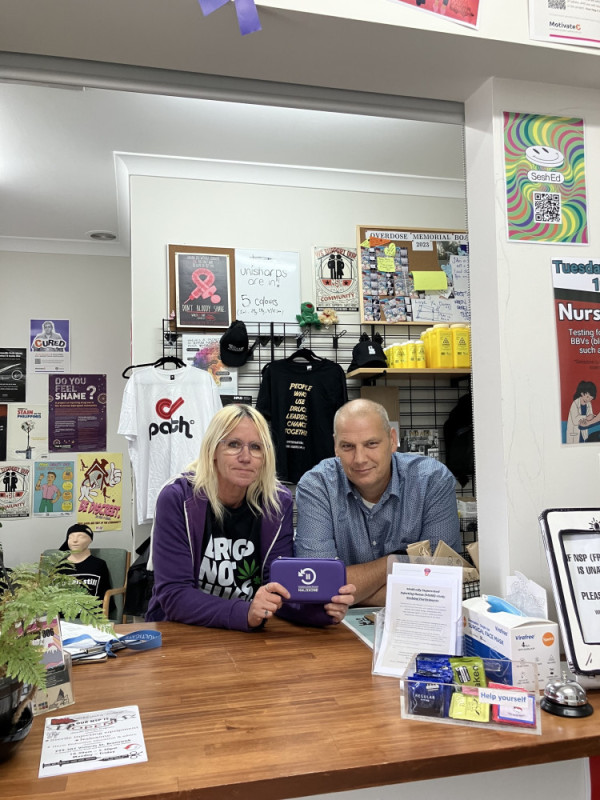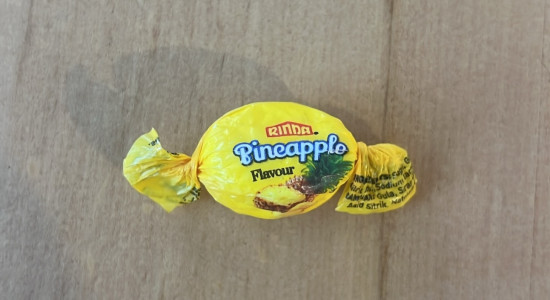What can we learn from Australia’s free naloxone scheme?
“It's pretty amazing watching someone come back from an overdose,” Sione Crawford says.
Throughout his career, Crawford, who is CEO of Harm Reduction Victoria, says he has thankfully only had to administer naloxone – a medicine that reverses opioid overdoses – a couple of times. “It is kind of magical.”
Amidst increasing opioid-related deaths across the globe, harm reduction advocates in Aotearoa are calling on the Government to increase funding and accessibility for the life-saving medication.
In November 2022, the NZ Drug Foundation Te Puna Whakaiti Pāmamae Kai Whakapiri applied to Pharmac for Nyxoid, a nasal spray version of naloxone, to be funded. In February 2024, that application finally went before the agency’s Therapeutics Advisory Committee.
The recommendations from that meeting will be published in June, at which point Pharmac will consider any potential funding. As we await that decision, what can New Zealand learn from Australia – where both injectable and nasal spray naloxone are freely available in the community?

Jane Dicka and Sione Crawford of Harm Reduction Victoria
What's the situation in Australia?
In July 2022, the Australian Federal Government made naloxone free and accessible without a prescription for people who are at risk of, or who may witness, an opioid overdose. This decision followed a successful pilot that had run in several Australian states.
The journey toward providing free take-home naloxone in Australia started with harm reduction services in Canberra and Victoria training people who use drugs to respond to emergencies since 2012.
These services collaborated with doctors to prescribe naloxone ampoules and through evaluations repeatedly demonstrated it was safe. Crawford stresses the teamwork of advocates, healthcare workers, and researchers in proving naloxone's safety. Despite initial struggles to get naloxone prescriptions, organisations kept pushing by sharing reports that showed how well it worked. Crawford gives credit to the Pennington Institute's advocacy and support from Australian Health Minister Martin Foley for changing policies.
Since the take-home scheme rolled out in Victoria, organisations like HRV can freely advertise and distribute naloxone directly to people who need it, greatly simplifying the process for members of the public to get their hands on it.
While its impact on overdose rates remains uncertain, Crawford says naloxone gives people agency and confidence to respond to overdoses. Nasal spray forms like Nyxoid make it especially accessible to the wider public, eliminating the need for needles. “Overall, it's a game-changer in empowering individuals to intervene effectively in overdose situations,” he says.
How naloxone saves lives
I overdosed last week, on the street. Someone there had naloxone, gave me it so now I’m alive today. I don’t know what would have happened if they didn’t have it, but it would probably be bad.
- Anonymous individual who was revived from an opioid overdose by naloxone
When opioids are taken in larger amounts, they flood receptors in the brain. This affects how the brain regulates functions like breathing. Because of this, an opioid overdose can quickly cause breathing to slow or stop.
Naloxone works by binding to the brain’s opioid receptors and 'kicking' other opioids off, reversing the effects of an opioid overdose. When given enough naloxone, a person can start breathing normally and regain consciousness in a matter of minutes.
Before Christmas last year, HRV’s head of health promotion, Jane Dicka, found herself using a naloxone ampoule to help someone who had overdosed. The HRV team had called an ambulance, but it was taking a long time to arrive.
Due to Dicka’s extensive experience, she understood how to use naloxone and administered several doses. “That person came back and was conscious by the time the ambulance turned up 90 minutes later.”
Says Crawford: “If we hadn't had [naloxone], that person would have potentially died.”
Back in the nineties when he was using drugs Crawford describes the fear he felt when someone started overdosing, dropping and starting to turn blue. “You could see how some people might run away from that. Because you're like, ‘what the fuck can I do about this?’” he says.
What can NZ learn from Australia’s experience with take-home naloxone?
Crawford says that for Australia, being able to distribute naloxone for free without a prescription is just part of the puzzle in getting it to those who need it. He says promotional campaigns, funding for community development and training also need to be part of the rollout.
He says an example of this would be contacting all chemists who prescribe methadone and asking if they know naloxone is available. Experience had shown that just because naloxone was funded and free for pharmacies to distribute, that didn’t necessarily mean they were stocking it.
“Let me be clear,” Crawford says. “It is a fantastic thing the government did by us, essentially subsidising naloxone. What they didn't do, however, was a big promotion alongside the rollout of the naloxone.”
Another lesson Crawford said New Zealand can learn is to be mindful of supply limitations. He says it generally takes Nyxoid manufacturers between six to 12 months to adjust their production levels. “The more notice [they] have, the better,” he says. “From what I've learned over the last couple of years…if a state just suddenly decides that it wants to prepurchase a million doses of Nxyoid, it's not viable.”
In the past few years, there have been major shortages globally of Nyxoid, particularly related to the Ukraine conflict and the North American overdose crisis.
A brief history of naloxone in New Zealand
Prior to 2020, injectable naloxone in New Zealand was only available on prescription and was otherwise primarily used by first responders. In 2020, a one-off funding measure during the COVID-19 lockdown saw naloxone stock made available to about three-quarters of needle exchanges.
In 2021 the NZ Drug Foundation setup a Givealittle page to fundraise for a stock of Nyxoid that the Foundation could distribute to people at high risk of an overdose and at drug checking clinics.
In June 2022, 13 people were hospitalised after overdosing on fentanyl sold as cocaine in the Wairarapa. The NZ Drug Foundation provided Nyxoid to Police in the area to ensure they were equipped to respond.
In November 2022, the NZ Drug Foundation applied to Pharmac for Nyxoid to be funded.
In November 2023, Pharmac permanently funded injectable naloxone to be distributed by needle exchanges without a prescription.
Nyxoid, a nasal spray naloxone product, is currently available at some pharmacies and online without a prescription. However, it currently costs $105 for a two-pack, a price that puts it well out of reach for many people.
The impact of take-home naloxone: it saves lives
Against the backdrop of increasing opioid-related overdose deaths internationally, Dicka highlights how important having naloxone freely available is. She refers to talks she’s had with peer-based harm reduction workers in North America where more than 100,000 people were lost to overdoses in 2023.
“I was talking to [a worker] at an American peer-based organisation who talked about losing co-workers to overdoses. The amount of trauma on those workers… every Monday when they open for work, they think “I wonder who they're going to tell us died this weekend.”
“I've lost count of how many overdoses I've responded to, both with and without naloxone… an overdose scenario is just made so much less stressful for having naloxone.” As a person who uses drugs herself, Dicka and her social circles prefer Nyxoid due to its ease of use. "So many more people were willing to have it and carry it," she says.
Dicka recently received a call from parents of an adult child who used opioids. They thanked her for her training, saying the naloxone they administered had saved their child’s life. She says this helped reaffirm she is doing the right thing.
Getting naloxone into the hands of those who need it
In Dicka’s experience, the best way to distribute naloxone into the community of people who use drugs is via peers, and places they already go, like needle exchanges.
But she would love to see distribution go further. Just like defibrillators are now in every supermarket, she says naloxone packs should be accessible in public places in case of emergencies.
Dicka says New Zealand already has progressive drug checking services available. “So why not start by giving naloxone out there to start with? Why not have a television campaign and make it normal for everyone?”
Recent news

Potentially lethal dose of methamphetamine found in Rinda pineapple lolly wrapping
The Drug Foundation is warning people not to consume Rinda pineapple lollies.

Beyond the bottle: Paddy, Guyon, and Lotta on life after alcohol
Well-known NZers share what it's like to live without alcohol in a culture that celebrates it at every turn

Funding boost and significant shift needed for health-based approach to drugs
A new paper sets out the Drug Foundation's vision for a health-based approach to drug harm

